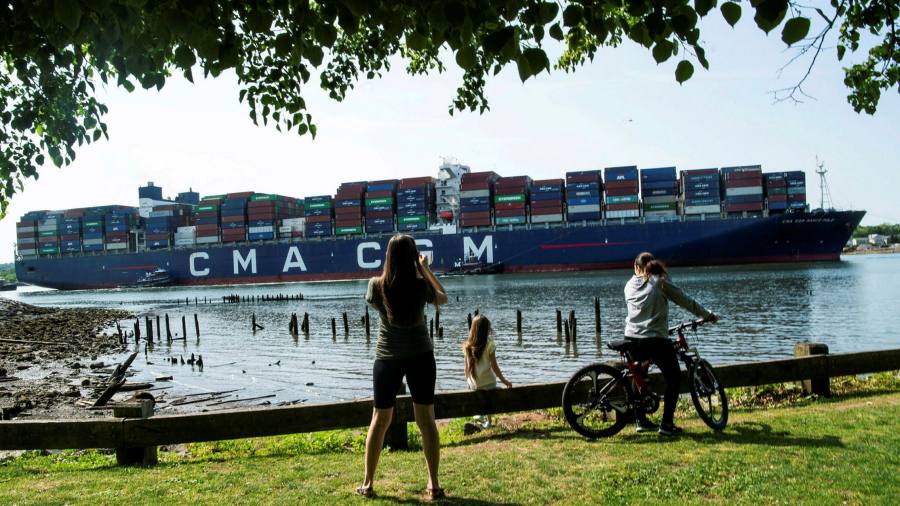
US retailers rush to secure holiday season stock
US retailers are struggling to meet demand as surging consumer spending combined with shortages of shipping containers, trucks and warehouse space push inventories to historic lows and spark fears over stock levels for the holiday season.
Chains from Costco to Dollar Tree have warned in recent days that port congestion is raising freight costs and lengthening the time it takes to bring goods into the US.
Stores that carried about one-and-a-half months’ worth of stock before the pandemic had their inventories to sales ratio fall to just 1.1 by March, the lowest level since at least 1992, US Census Bureau data show.
“For every 110 televisions a retailer might have in stock, they’re selling 100 of them [each month]. That leaves very little room to have a safety stock,” said Noah Hoffman, vice-president of North American surface transportation for CH Robinson.
The logistics company said many retailers had brought holiday orders forward from June to April to beat the bottlenecks. Yet consumers may still face four- to six-week waits for Christmas ecommerce deliveries, Hoffman added.
With ships from Asia waiting 12 to 15 days to unload and domestic freight carriers such as Union Pacific and FedEx accelerating peak season surcharges by months, “we don’t foresee the inventory catching up until early 2022”, Hoffman said.

Several retailers confirmed on earnings calls last week that they had accelerated orders to avoid running low on stock.
John Garratt, chief financial officer of Dollar General, said it had “strategically pulled forward” purchases. The dollar store chain was comfortable with its inventory, he added, but “out of stocks remain higher than we would like for certain high-demand products”.
Corie Barry, chief executive of Best Buy, echoed that “extraordinarily high” consumer demand for the electronics retailer’s products had combined with supply chain disruptions to create “constraints” in the availability of appliances, computers and televisions.
Costco had been “front-loading” orders, Richard Galanti, its chief financial officer told analysts, noting that the turnround time for containers arriving in the US, delivering their contents and heading back overseas had doubled to 50 days.
“The feeling is that this will continue for the most part of this calendar year,” he said.
Shipping costs are also far above usual levels, with base rates from Asia to the US running at $4,000 to $5,000 per container compared with $1,500 at the same point in 2019, said Brian Whitlock, a senior director of Gartner. Some customers are paying up to $3,000 on top of that to guarantee capacity.
Delays caused by a container ship running aground in the Suez Canal in March compounded the fact that China’s faster exit from the pandemic than the US and Europe had left many containers in the wrong places, Whitlock noted.
Jason Hilsenbeck, president of LoadMatch, which matches freight loads and trucks, said the import delays were “worse than anyone can remember”, but predicted that consumer demand would abate, easing the capacity crunch by August.
The west coast port backlog appeared to be improving, Gartner’s Whitlock agreed, but he said the “container imbalance” could continue into the third quarter when retailers typically receive holiday merchandise.
“We expect 2021 to be a challenging year all the way through Chinese new year” in February 2022, he said: “The supply chain right now is extremely fragile and I think we cross our fingers and hope we get enough time without any more significant events.”
Stay connected with us on social media platform for instant update click here to join our Twitter, & Facebook
We are now on Telegram. Click here to join our channel (@TechiUpdate) and stay updated with the latest Technology headlines.
For all the latest Education News Click Here
For the latest news and updates, follow us on Google News.

